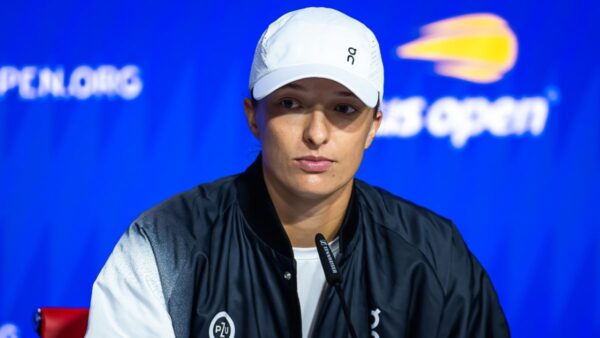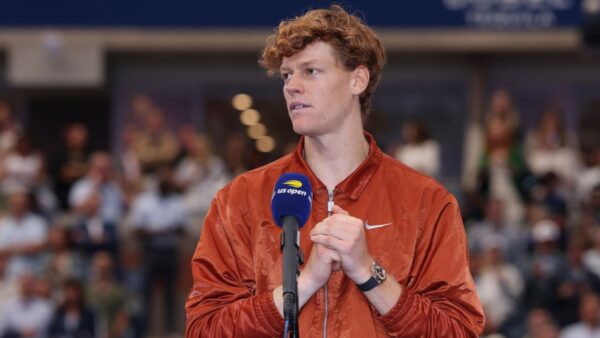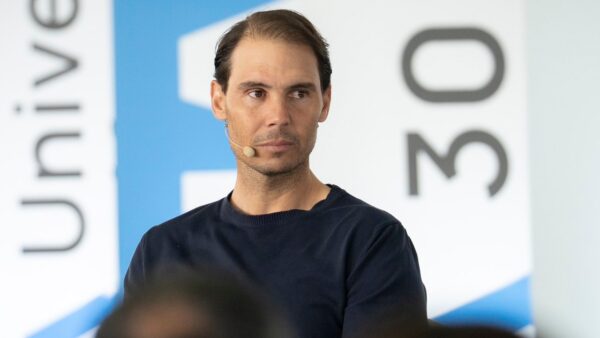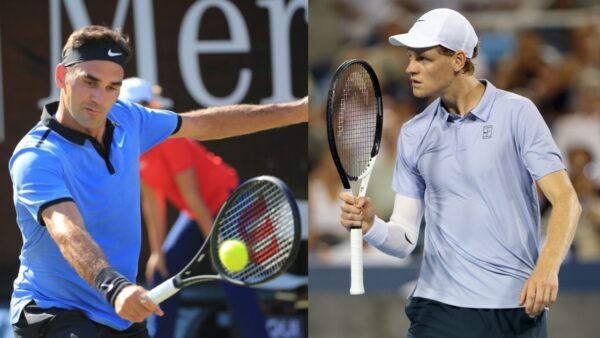Indian shooting at Tokyo 2020: What went wrong and the way forward

🔍 Explore this post with:
While India’s medal haul of 7 at Tokyo 2020 was the best in the nation’s Olympic history, in hindsight it could have been much better. Neeraj Chopra’s last-day heroics added a golden sheen to a campaign that had produced more heartbreaks than medals.
Shooting was supposed to be the focal point in the push for a double-digit medal tally. Unfortunately, all the stakeholders involved with the sport failed when it mattered. We take a closer look at what went wrong and solutions for the future.
Indian shooting at Tokyo 2020: A Recap

With the elimination of Aishwary Pratap Singh Tomar and Sanjeev Rajput in Men’s 50m Rifle 3 Positions, the last flickers of India’s shooting medal hopes at the Tokyo Olympics were extinguished. It was a dismal end to an Indian campaign that had promised so much at the beginning of the year and delivered so little in the end.
Only one Indian- Saurabh Chaudhary- could qualify for the finals and only the team of Saurabh and Manu Bhaker in 10m Air Pistol Mixed could manage a single-digit ranking in qualification rounds. The scores posted by the rifle team were the worst in recent memory. In pistol, the familiar Indian malaise of choking during the final few shots intensified even further. Only shotgun fared as expected.
To put it in perspective the 2016 Rio Olympics that were considered an unmitigated disaster for the Indian shooting saw two Indian finalists and two other narrow misses. For a sport that has produced India’s only individual Olympic gold and has been an integral part of India’s modern Olympic journey, two Olympics in a row with no medals and a falling score trajectory are foreboding signs.
What was more crushing for Indian fans this time compared to 2016 was the spectacular success of Indian shooters during the 2018-2021 Olympic cycle that hinted towards an unprecedented haul for the Tokyo Olympics.
Back during the 2019 ISSF season when India won a record 21 golds including 3 at the ISSF World Cup Finals, few could have predicted a showing even worse than Rio. Yet the facts remain what they are and it is time the shooting federation and government authorities do a serious investigation on the debacle in Tokyo.
What Went Wrong?
Problems in preparation

The approach of Indian shooters and NRAI towards Tokyo 2020 can be best described by one word: Naive.
The NRAI Review Committee formed in the aftermath of Rio 2016 stated in the context of Jitu Rai: “Any level of talent is irrelevant without correct preparation for the Olympics.” It is shocking that 5 years later things remain exactly the same.
At Tokyo, Abhishek Verma was placed as high as 5th near the end of the qualification and was well in the reckoning but inexplicably shot two 9s and two 8s in his final four shots to crash to 17th place. All the hard work was undone in a matter of moments.
Manu Bhaker similarly had two disastrous rounds of 92 and 94 in 10m AP Mixed qualifications that all but ended India’s chances in what was considered a sure-shot medal event. In another Jitu Rai-flashback, Saurabh Chaudhary, the brightest medal hope, shot an uncharacteristic series of 9s in the final and was eliminated 7th, his lowest placing ever at a major international event.
Jitu Rai and Gurpreet Singh at Rio, Joydeep Karmakar at London, Gagan Narang at Beijing, Abhinav Bindra at Athens; Indian Olympic history is filled with examples of narrow misses by shooters.
Absolutely no lessons from the past were learned by the Indian coaching staff and federation to prepare shooters for clutch moments. Indian sports-persons in the past were called out for lacking the killer instinct. Decades later the story continues.
Manu’s pistol malfunction

Manu Bhaker had a pistol malfunction during the Women’s 10m AP qualifications after she was doing well in her initial series. Her gun was repaired with the help of coach Ronak Pandit. The repair work took precious qualification time. It is to Manu’s credit that she fought back valiantly and was in with a chance till the last shot.
Unfortunately, the incident gave rise to a war of words between pistol manufacturer Morini and coach Pandit and created unnecessary social media speculation that further sagged the morale of the Indian camp.
This is not the first time Manu has suffered an equipment malfunction. It happened in 2019 during the finals of Women’s 25m Pistol at the Munich World Cup. Ronak Pandit said in his Facebook video that Manu refused to shoot with her spare pistol as her previous coach (presumably Jaspal Rana) had changed her grip.
Now, this begs the questions from a layperson point of view:
- Why was the grip changed in the first place and could the new grip not have been reverted to the old configuration in the preparation for the Olympics if the shooter was not comfortable with it?
- Learning from prior experience did the shooter and coaches not envisage a scenario where the pistol could have malfunctioned and try to work out a protocol of what to do if it happens at the Olympics, for example practicing with her spare gun?
- Were the shooter, current coaches and past coaches even in communication?
- Were both her pistols properly checked and maintained in the lead up to the Games?
Abhinav Bindra would train himself for worst-case scenarios. In Beijing 2008, his rifle was reportedly tampered with just before the finals. This did not stop him in his march towards gold. Judging from the cases of Manu and the pistol team, it seems the coaches and shooters relied on nothing else but pure talent and there was no Plan B for dealing with different situations.
Unsuitable coaches

The pistol coaches sent at Tokyo were Ronak Pandit and Samaresh Jung. Neither has won a single ISSF World Cup medal; the Indian shooting scene was less developed during their prime than it is today.
It is not necessary that a good coach has to have been a great player. But neither pistol coach has much experience in training an Olympic or World Championship medalist. Their teenage wards in just two years have won more medals than the coaches did in their entire careers. Commanding authority in such a situation is not easy.
Among the pistol coaches not present in Tokyo, Pavel Smirnov, the Russian who coached Vijay Kumar to an RFP silver in London 2012, was criticized by the NRAI Review Committee in 2016 for not adequately training precision shooters Jitu and PN Prakash. He was still persisted with for the Tokyo Olympic cycle. India could not qualify a single RFP shooter for Tokyo. Smirnov was also criticized for an outburst at the team’s Croatia training camp.
Factionalism

This leaves Jaspal Rana the mercurial coach and topic of much controversy in the Tokyo aftermath. A Times of India report highlighted the problems shooters had with Rana. Neither Saurabh Chaudhary nor RFP specialist Anish Bhanwala was willing to train with him as far back as 2018.
After his ward Chinki Yadav won gold at Delhi 2021 and beat Manu, Rana paraded in front of the media wearing a white T-shirt with a handwritten message, the same that Manu had sent to Rana prior to the event. The content of the message itself reveals there were multiple factions in the pistol team with Rana, Abhishek, and Chinki on one side and Manu and Pandit on the other.
Matters came to a head during the Tokyo qualification round where Manu was unwilling to use the spare pistol whose grip was changed by Rana.
Rifle ruins

If stories from the pistol team seem dysfunctional enough, rifle was another level of catastrophic. This was the rifle team’s worst performance since Atlanta 1996.
No one paid heed to the warning signs that sounded in the Osijek World Cup. The scores were dire across the board. Some of them read: 621.9, 622.8, 624.7, 1157, and 1154. Only Elavenil Valarivan in Women’s 10m Air Rifle and Aishwary Pratap Singh Tomar in 50m Rifle 3P gave any hope. The latter suffered a typically Indian meltdown in the standing round while a poor 5th series cost Elavenil.
While there have been no sensationalist reports about rifle in the media, it is obvious there was no clear delineation of the role of the national coach, junior coach, and personal coach. Conflicts of interest and turf wars among coaches abounded to the detriment of the team. Foreign coach Oleg Mikhaliov appeared to be a passenger with no real role.
If pistol needs tweaking, rifle requires an overhaul from ground-up.
Psychological impact

Jaspal Rana was the most decorated Indian pistol shooter in his era. When months before a major event such as the Olympics, a respected name in the field behaves like an immature teenager, it cannot do much good for the morale of a young team.
Similarly, the rifle coaches instead of being inspirational figures were looking out for their self-interest. Shooters should be at their mental and physical peak for the Olympics. In India’s case forget peaking, the shooters were exhausted after enduring months of egos, infighting, and favouritism.
Adding to the vitiated atmosphere was the stress inherent due to the Olympics, pressure from the media to produce results, interference by parents, and the young age of most shooters.
In hindsight, it is not surprising the Indian campaign collapsed as spectacularly as it did.
Poor selection
Apurvi Chandela was one of the best shooters in the world in 2019. However, in early 2021 neither she nor the other quota winner Anjum Moudgil could even qualify for the finals of the 4 domestic trials. Their performances in the Delhi and Osijek World Cups were also not reassuring. Deepak Kumar had a similar story in Men’s 10m AR.
These three were nonetheless chosen for the Olympics Air Rifle squad ahead of others who were posting good scores in the trials. Here again, the blame should go to the rifle coaches and the selectors for giving these shooters a free pass.
Croatia chaos
The squad shifted base to Croatia for their Olympic preparations owing to the Covid situation in India. The NRAI specially arranged for a chartered flight. At the end of the 75-day foreign trip, however, they came out as significantly worse shooters than before.
Then there were media reports of everyone enjoying a European picnic instead of seriously preparing and of a breakdown in player-coach relations.
Pandemic
India arguably would have fared better had the Olympics been held in 2020 as originally scheduled. Not only did shooters lose their rhythm and momentum (notably in the case of Apurvi), the one-year break allowed egos and insecurities to fulminate. Instead of being united for one common goal, the team was pulled apart in different directions.
The way forward for Indian shooting
Foreign expertise

All 4 of India’s shooting medalists have been trained by foreign coaches. None of the Indian coaches at Tokyo barring Suma Shirur have made it to an Olympic final. Some have not even qualified for the Olympics.
After Tokyo, it is obvious that at the moment Indian coaches do not have what it takes to create an Olympic champion. It was for the first time in history that a number of young shooters represented India at the Olympics. None of the coaches at Tokyo had any experience in the selection and training of so much talent.
Even a layman could have coached a once-in-a-generation genius like Saurabh Chaudhary to the 7th place. To turn him into the next Jin Jong-oh is an art no one in India possesses.
For the Olympics, India needs coaches who routinely deal with prodigies and have prior experience in producing results. The NRAI Review Committee also mentioned the huge difference foreign coaches made in the Rio preparations of PN Prakash and Gurpreet Singh.
Sports Science and Mental Health

Deepika Kumari lamented the lack of a psychologist for the Indian archery team. Indian shooters missed such an expert even more sorely. All Indian shooters who participated in Tokyo now require counseling by an experienced sports psychologist.
Abhinav Bindra back in 2016 spoke about having to go abroad for the best doctors and mental conditioning experts. Bindra always made it a point to be aware of the cutting-edge developments in sports science.
South Korean archers already have an intimidating aura for their opponents. Yet they go the extra mile for their Olympic preparations. For the recent Games, they replicated the Tokyo archery arena complete with bird sounds and English and Japanese announcements.
The world of sports has changed. It is time India catches up.
Accountability and Professionalism
The Indian authorities spared no expense for the shooters’ Olympic preparation. In contrast, Gulfam Joseph from Pakistan- a country with only a fraction of resources as India’s- recovered from a 92 in his 1st series to nearly making it to the 10m AP final. San Marino -a country with a population of 34000- won a silver and bronze to match India’s performance in London.
This signifies a highly inefficient use of resources by India. For the future NRAI needs to look at the Hockey India example and bring competent and professional people on board in both coaching and selection.
Are World Cups and World Rankings meaningless?
This question was the topic of much social media debate. The short answer is World Cups: no, World Rankings: yes. Past Olympic cycles have shown a significant correlation between World Cup medals and Olympic medals/finals with the notable exception of India.
India should still very much look to the top World Cup charts. The NRAI’s junior program has been a massive success and even the recent selection trials show a number of scores above 580 and 630 posted by youngsters. But the preparations for elite tournaments should only be conducted by people with impeccable credentials.
The next Asian Games are a year away and the best shooters of China, South Korea, and Japan will be targeting the event. If the Indian shooting is serious about redemption the goal should be to win the maximum gold medals there and take it further for Paris.







